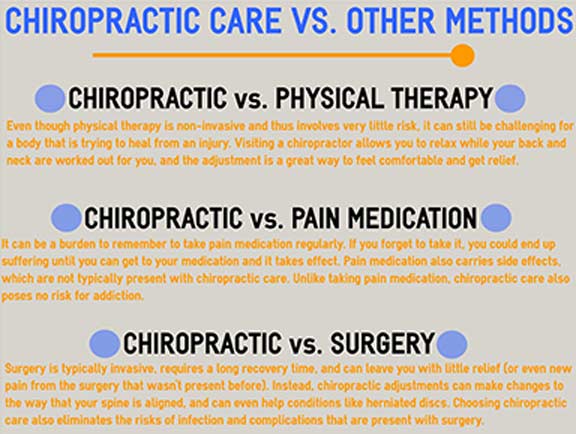Neck And Back Pain As An Indicator Of Health: Usual Conditions And Their Symptoms Explained
Neck And Back Pain As An Indicator Of Health: Usual Conditions And Their Symptoms Explained
Blog Article
Write- https://theuktime.com/your-education-in-nursing/ -Martensen Jensen
If you're experiencing pain in the back, your body might be attempting to inform you something more than just discomfort. The way your back feels can give valuable clues concerning your overall health. Understanding the certain kind of discomfort you're feeling and any type of accompanying symptoms is vital to untangling the mystery behind your discomfort. Let's check out the common conditions and signs and symptoms related to various kinds of neck and back pain to shed light on what your body might be signaling.
Types of Neck And Back Pain
When it pertains to neck and back pain, there are different types that you might experience. One common type is muscle mass discomfort, typically caused by overuse, pressure, or injury to the muscular tissues and ligaments supporting the spine. This kind of pain can vary from moderate discomfort to serious and devastating pain.
One more kind is nerve discomfort, which can result from problems like herniated discs or sciatica. Nerve discomfort usually presents as a sharp, shooting sensation that emits down the leg.
Joint discomfort in the back can come from issues like arthritis or sacroiliac joint dysfunction. This type of pain is generally felt in the lower back and can be worsened by specific movements.
Furthermore, pain in the back can be connected to architectural problems such as spine stenosis or vertebral cracks. Understanding the kind of back pain you're experiencing is critical in figuring out the proper treatment and monitoring methods.
Common Symptoms to Watch For
Moving past the various kinds of pain in the back, it's important to identify the typical signs that can indicate underlying problems.
Relentless pain in the back that aggravates with activity or at night might show an extra severe trouble. Pins and needles or tingling in the legs or feet, especially when accompanied by weak point, might point to a nerve-related issue. If you experience sudden weight-loss in addition to pain in the back, it could be a sign of a much more systemic condition.
Pay attention to any adjustments in bladder or bowel feature, as this could be linked to spinal cord compression. Fever, cools, or evening sweats in conjunction with neck and back pain might indicate an infection. Watch out for discomfort that emits down one or both legs, possibly indicative of sciatic nerve pain.
Health Conditions Linked to Neck And Back Pain
If you suffer from pain in the back, it's important to comprehend the potential wellness conditions linked to this discomfort. Pain in the back can be a signs and symptom of various underlying issues, consisting of muscle stress, herniated discs, osteoarthritis, back stenosis, and even conditions like kidney stones or infections.
Muscular tissue pressures prevail and commonly result from raising heavy items or unexpected activities.
Herniated discs occur when the soft cells between vertebrae protrudes, causing nerve irritation.
Osteoarthritis, a degenerative joint condition, can lead to neck and back pain as cartilage wears down.
Spinal constriction, the narrowing of the back canal, can tax nerves.
Kidney stones might cause extreme back pain if they move right into the urinary tract.
Infections like back osteomyelitis can likewise materialize as neck and back pain. Comprehending these possible health and wellness conditions can help you seek ideal medical care and management for your back pain.
Conclusion
So, following time your back hurts, take notice of the type of discomfort and going along with signs and symptoms. Maybe visit my home page from your body concerning underlying health and wellness conditions like muscle mass stress, nerve issues, joint issues, or perhaps architectural concerns. By identifying these indications, you can take positive actions to address the source of your pain in the back and enhance your overall health and well-being.
